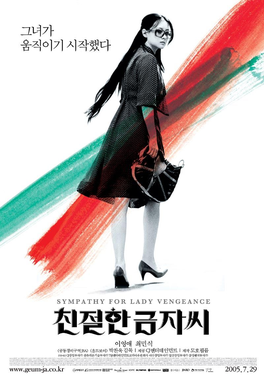The File on Thelma Jordon
Year: 1950
Writers:
Screenplay by Ketti Frings
Story by Marty Holland
Lead Actors:
Barbara Stanwyck
Wendell Corey
Director:
Robert Siodmak
Plot Summary:
Thelma Jordon late one night shows up in the office of Assistant DA Cleve Marshall, who drinks due to a struggling marriage, with a story about prowlers and burglars. Before they know it, they are involved in a love affair. Thelma is also in love with a jewel thief, Tony Laredo, who has persuaded her to go live with her rich aunt, and steal her jewels. During the robbery, she shoots her aunt, but makes it look like an outside job. Through some clever manipulations by Thelma, Cleve is assigned the case and he maneuvers the state's case against her in such a manner that she wins an acquittal. But then Tony shows up. And nothing, from this point, works out well for Thelma, Cleve or Tony.
Why I Think This Is A Classic Movie:
- This is a film noir in the style of the 1944 Billy Wilder film "Double Indemnity" (also starring Barbara Stanwyck as the femme fatale). However, in "Thelma Jordon" Stanwyck (the protag) takes on a more complicated character and there is more sympathy for Thelma's gullible "victim" (Cleve, antag who becomes an ally). While the plot has also been compared to de Toth's 1948 "Pitfall", the film is different from that as well. In Pitfall, Forbes (the protag, played by the hardboiled insurance agent Dick Powell) is similar in many ways to Cleve Marshall, and Mona Stevens (the antag, played by the excitement-loving, vivacious Liz Scott) is similar to Thelma Jordon, However, the sympathy in "Pitfall" is with Mona, while the sympathy in "Thelma Jordon" is with Cleve. It makes a big difference.
- The talented cast and crew is another reason why this is a great movie:
- Actors: The strong performances of Corey (as Cleve Marshall, gullible assistant DA) and Stanwyck (as Thelma Jordon, femme fatale) sell the story. They must construct for us sympathetic characters, so that Stanwyck's act of driving him to the brink of destruction (as well as her own resulting death) has emotional meaning for the audience.
- Writers: Screenwriter Ketti Frings (1909 – 1981) was an American author, playwright, and screenwriter. Her novel "Hold Back the Dawn" was adapted by Billy Wilder and Charles Brackett into a 1941 film which was a Best Picture Academy Award-nominee. One of her plays was nominated for a Tony Award and won the Pulitzer Prize for Drama in 1958. Story writer "Marty Holland" is a pseudonym of Mary Hauenstein (1919-1971), a novelist who worked as a Hollywood script typist. Her other works include the novel for "Fallen Angel" (1945), directed by Otto Preminger.
- Director: Robert Siodmak was a film director specializing in thrillers. He directed well over 50 films, including "The Killers" (1946), based on a story by Ernest Hemingway. While not in this case, he often teamed with his younger brother, Curt Siodmak, a novelist and prolific screenwriter (e.g.,The Wolf Man, 1941).
- Cinematography: George Barnes (nominated 8 times for an Academy Award, winning for Hitchcock's Rebecca in 1940).
- As Film Noir of the Week says in its review, this movie is an "underrated and currently grossly ignored gem."
My Favorite Moment In The Movie:
I love the scenes between Stanwyck and Corey. The one in the opening, when they are falling in love, are endearing and hook the viewer to want to see more.
My Favorite Dialogue In the Movie:
Thelma Jordon meets with her lawyer (Kingsley Willis, played by Stanley Ridges) in jail, at about the 1:02 point:
Willis: ... Marshall, on the other hand, we don't need to worry about.
Thelma: You thought all this up yourself?
Willis: No, to be honest. I give credit where credit is due. (pulls out a piece of paper.) From your Aunt Vera's friend, "Anonymous", the one who sent me $5000 to defend you. (Reads from the paper.) "Dear Mr Willis, a smart move would be to disqualify the district attorney by hiring his brother. ... " (burns paper with a match.) "Anonymous" has quite a grasp of things, don't you say?
Thelma: You did take the idea.
Willis: I like it. ...
Another quote, after Tony spies on her kissing Cleve (at around the 27 minute point):
Thelma Jordan: Tony, you scared me!
Tony Laredo: I didn’t mean to. I hate to be an eavesdropper.
Tony is a relatively minor supporting character but terrifying never-the-less.
Key Things You Should Look For When Watching This Movie:
Key scenes are: The Sun-room Scene between Thelma and Cleve (at about the 54-57 minute point) and the Car Scene between Thelma and Tony when she forces him to drive them off a cliff (at about the 1:33-1:35 point).
Movie Trivia:
(1) Stanwyck's original name was Ruby Catherine Stevens and her real-life older brother Malcolm Byron ("Bert") Stevens plays a defense aide in the courtroom scenes (at about the 1:08-1:25 point).
(2) The film is in the public domain and is legally available for free (at least in the U.S.) at: archive.org, and youtube
This post was first published in May 2015 at the great writing blog, Go into the Story, by Scott Myers. Check it out!




